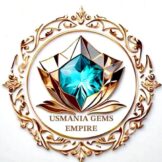Amethyst is a violet variety of quartz. The name comes from the Koine Greek αμέθυστος amethystos from α- a-, “not” and μεθύσκω methysko / μεθώ metho, “intoxicate”, a reference to the belief that the stone protected its owner from drunkenness.
Color
Amethyst can range from light lilac to deep royal purple, and can also be brownish. Transparent amethyst with an intense, uniform purple color and red flashes is the most prized.
Origin
Amethyst is found in many places, including South America, Brazil, the United States, Canada, Mexico, Africa, Australia, and India.
History
Amethyst was once as expensive as ruby and emerald, but large deposits in Brazil were discovered in the 19th century. Ancient Greeks believed amethyst prevented intoxication, and wore it or carved drinking vessels from it. The name amethyst comes from the ancient Greek word amethystos, which means “not drunk”.
Uses
Amethyst is often used in jewelry, such as bracelets, beads, and cabochons. It’s also the gem for the 6th and 17th anniversaries.
Other facts
When heat-treated, amethyst becomes citrine, the birthstone for November. Some people believe amethyst has metaphysical properties, such as promoting peacefulness and restful sleep.


